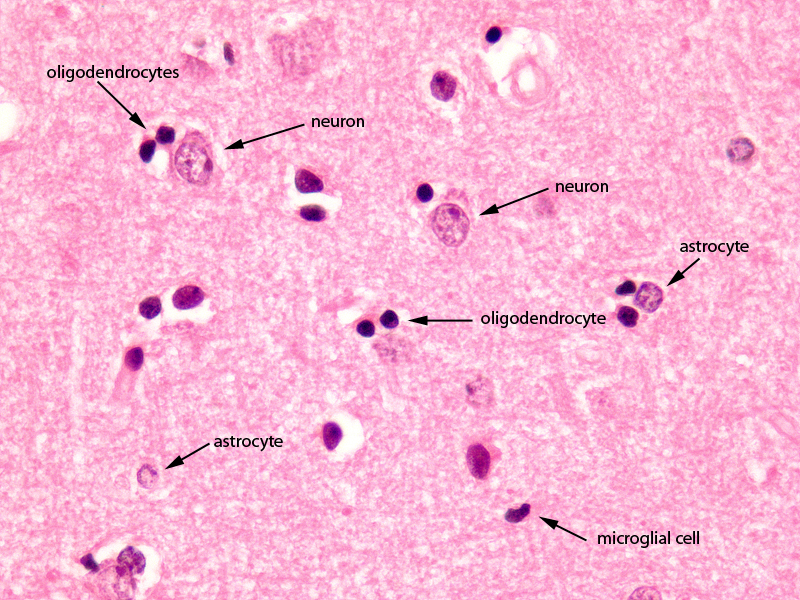Copyright 2010
Definition
Microglia consists of cells which are resident macrophages of the brain and spinal cord, thus forming the main immune system in the central nervous system.
These small cells are mobile are capable of phagocytosis. They derive from the hematopoietic marrow. Their cytoplasm can be visualized by silver staining. Functionally, they are very plastic, capable of structural changes based on their location and necessity. They can function as scavenger cells, phagocytic, repair promoters, and homeostatic maintenance.

Microglial Cell (Lower Right) Cerebral Cortex Magnification 60X |
|
The image shows a histological section of the brain at 60X magnification. The section shows the 4 of the common basic types of brain cells; the largest is the neuron which is only found in gray matter. They are 10 times larger than the other cells but less common than the second type of cell called the glial cell. The astrocyte is a type of glial cell and is the second largest cell. It often lies in close association with the blood vessels. The third type of cell seen in this section, also a glial cell is the oligodendrocyte. It is smaller than the astrocyte and has a darker nucleus. It assists in the myelination of the white matter. It is in fact the predominant cell of white matter. The last cell seen in this image is the microglial cell. It is the smallest and has a fusiform shape. Courtesy of Thomas W.Smith, MD; Department of Pathology, University of Massachusetts Medical School. 97803 |
Microglial cells can proliferate when lesions occur in the CNS. They become antigen presenting cells. They also secrete cytokines, proteins and free radicals that can, sometimes, aggravate injuries.
Essentially, they protect the CNS from bacterial, viral, parasitic infections, as well as tumor prevention. However, they also play a role in chronic inflammation and neurodegeneration, in diseases such as Alzheimer’s and Parkinson’s.
